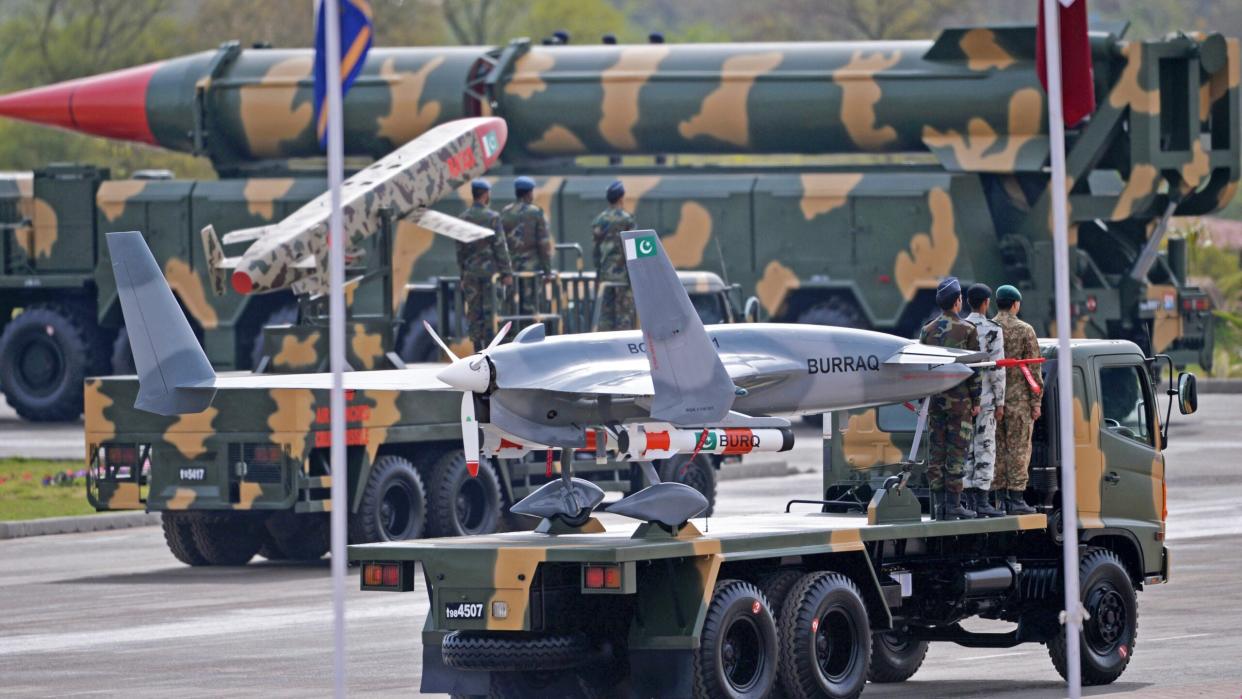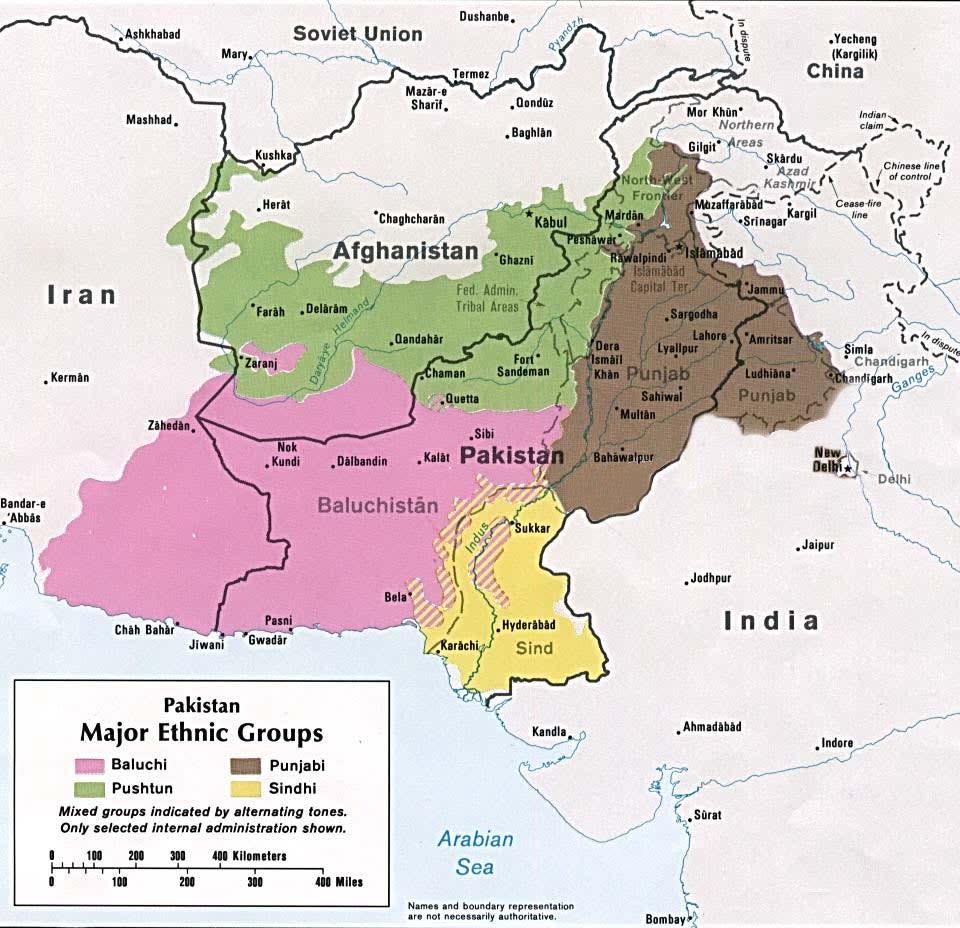Pakistan Strikes Back At Iran, Targeting Militants Near Border

Pakistan has struck back at Iran with attacks on militant groups near the border between the two countries after Tehran targeted militant sites within Pakistan just two days prior. Pakistan said it used weapons including drones and loitering munitions to hit the Iran-based Baloch separatist militants, stoking fears of an escalating conflict between the two countries. It's the first time another country has openly struck inside Iran since the Iran-Iraq war of the 1980s.
The Iranian attacks on Pakistani territory were part of an unprecedented operation involving what Iranian officials described as “precision missile and drone strikes.” These were directed against two alleged strongholds of Jaish al Adl (JAA), a Sunni Islamist militant group that has previously mounted attacks in Iran, including against the country’s Islamic Revolutionary Guard Corps, and police. Pakistani authorities said that Tuesday’s strikes hit civilians, killing two children.
In regards to the Pakistani retaliation, the Pakistani Foreign Ministry today said: “A number of terrorists were killed during the intelligence-based operation,” which it described as a “series of highly coordinated and specifically targeted precision military strikes against terrorist hideouts.”
“The sole objective of today’s act was in pursuit of Pakistan’s own security and national interest, which is paramount and cannot be compromised,” the ministry added, also stating that it had “credible intelligence of impending large-scale terrorist activities” by separatists operating in Iran.
The location of the strikes — which were carried out under Operation Marg Bar Sarmachar — was the Sistan-Balochistan province in southeastern Iran.
Pakistan’s military intelligence also said that the targets were bases used by two groups of ethnically Baloch separatist militants: the Baloch Liberation Front (BLF) and the associated Baloch Liberation Army.
Both groups operate in the Balochistan region, an area that includes Pakistan’s southwestern province of Balochistan, Iran’s southeastern Sistan-Balochistan province, plus parts of southern Afghanistan. The groups are fighting for an independent state of Balochistan, which has led to a militant insurgency directed against both Iran and Pakistan — those countries blame each other for harboring terrorists.

the Baloch people are the major ethnic group. U.S. Central Intelligence Agency
“The precision strikes were carried out using killer drones, rockets, loitering munitions, and standoff weapons,” Pakistan’s military intelligence said in a statement. “Maximum care was taken to avoid collateral damage,” it added.
Local reports suggested that drone strikes began at around 4:30 am, hitting several residential houses in the village of Haq Abad, around two miles from the Pakistani border.
With past relations between Islamabad and Tehran already strained, a senior Pakistani security official told Reuters that the military is now on “extremely” high alert and is ready to use force to respond to any “misadventure” from the Iranian side.
Iranian media reported that several Pakistani missiles struck a village in the Sistan-Balochistan province.
“The information received indicates that four children, three women, and two men, who were foreign nationals, have been killed in the explosion that occurred in a village,” Iran’s Interior Minister Ahmad Vahidi told state TV.
Other reports indicate that 10 people from one family were killed in the attacks, including six children, reportedly all “non-Iranian nationals.”
In a statement, the Iranian Ministry of Foreign Affairs said that the country “condemns Pakistan’s unbalanced and unacceptable drone attack on non-Iranian villagers on the border of the two countries. At the same time, the Islamic Republic of Iran adheres to the policy of good neighborliness and brotherhood between the two nations and the two governments of the Islamic Republic of Iran and Pakistan. It does not allow enemies to strain the amicable and brotherly relations of Tehran and Islamabad.”
As well as condemning the strikes, Tehran has summoned Pakistan’s senior diplomat in Iran to provide an explanation.
The political fallout is being felt in Islamabad, too, reportedly forcing Pakistan’s caretaker Prime Minister Anwaar-ul-haq Kakar to cut short his visit to the World Economic Forum in Davos, Switzerland, and return home.
The Pakistani Foreign Office has made efforts to diffuse the situation including stating that Pakistan “fully respects the sovereignty and territorial integrity of the Islamic Republic of Iran.”
Before today’s strikes, Pakistan had already reacted angrily to the Iranian attacks, which it described as a “blatant breach” of its sovereignty, recalling its ambassador from Iran, and warning Tehran against further action. A planned joint naval exercise between Iran and Pakistan has also been called off.
The situation remains tense, for now, with this week’s cross-border attacks the most serious escalation between the two nations in recent years. As well as a powerful demonstration of intent to Iran, the Pakistani strikes are likely intended to send a message to Afghanistan, which Islamabad sees as dragging its heels when it comes to confronting the Baloch militants.
Today, Taliban officials in Afghanistan reportedly called upon both Iran and Pakistan to show restraint and avoid further violence.
This is all being played out against the backdrop of a fast-deteriorating security situation in the wider region, triggered by the war between Hamas and Israel that began on October 7, and which has since drawn in other actors, including the Yemen-based Houthi militants, the United States and its allies, armed groups in Iraq and Syria, and others.
Throughout, Iran has been playing a major role, as the chief sponsor of Hamas and the Houthis, as well as Hezbollah in Lebanon.
As well as backing these groups, Tehran has recently shown its willingness to launch attacks on militant groups in Iraq and Syria, and now also in Pakistan. Its attacks on targets in all three countries serve multiple purposes, including displaying its ballistic missile capability, especially to Israel, with the first use of a longer-range missile that can hit Israeli territory, as you can read about here.
Further to that, tit-for-tat strikes against alleged terror targets by Iran and Pakistan in each other’s countries could also serve to showcase their respective capabilities and demonstrate resolve without directly attacking each other. Reported air defense drills launched by Iran today could also deliver a similar message.
Until today, however, Iran’s various antagonists in the region and beyond have held back from launching attacks on Iranian territory. With that in mind, Pakistan’s attacks significantly up the ante in a situation that’s already highly unpredictable.
Contact the author: thomas@thedrive.com

